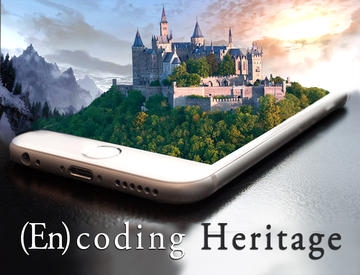(En)coding Heritage

This network ran from 2020 to 2022.
New visual computing technologies, such as 3D mapping and photogrammetry, capture highly accurate reproductions of artefacts, historical structures and sites. Augmented and virtual reality enables interaction and exploration of these reproductions 'first-hand'. These powerful tools are already being integrated into research and becoming central to academic study. Their ability to record millimetre-precise, photo-realistic 3D models enables the safeguarding of cultural heritage otherwise threatened by war, erosion, climate change and degradation. For example, a 3D model of Palmyra remains the only scholarly record of this war-ravaged site in Syria. Such technology also increases access to research material and cultural heritage: it brings distant monuments to new audiences and enables researchers to study artefacts or sites remotely, from entirely new perspectives (in higher resolution, under different lighting and environmental conditions, through cross-sections and other view-points, across time etc.).
The aim of this network was to connect scholars from the humanities, social sciences and applied sciences interested in harnessing the power of 3D mapping, photogrammetry and virtual environments in their research. Collectively, this network explored and tested the benefits or limitations of technological approaches for studying historical records, material objects and cultural sites, and chart new paths of exploring our past and shared heritage.
For more information, to join the network, sign up for the mailing list, or collaboration you could email encodingHeritage@gmail.com.
Convenors:
Taylor Bennett
Lisandra (Lia) Costiner
Paul Doherty
Elizabeth Frood
Mattia Montanari
Matthew Nicholls
Giovanni Maria Pala
Richard Smith
Magdalena (Lena) Szalewska
Emanuela Vai
Amanda Westcott
Katrin Wilhelm


